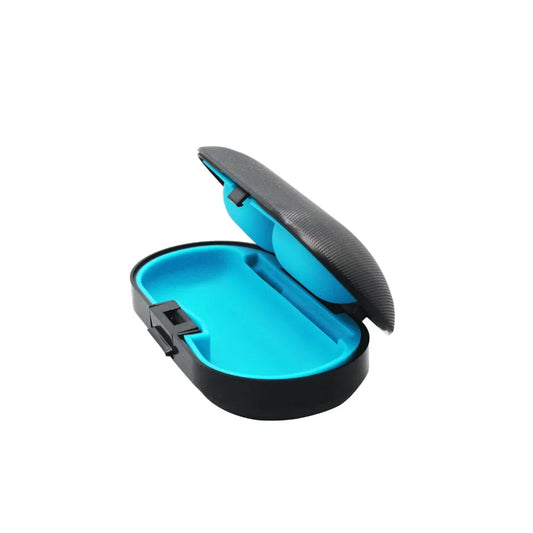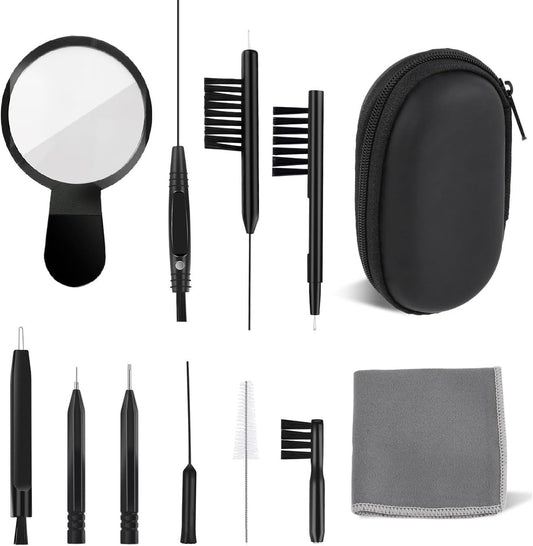The Best Way to Remove Ear Wax: Safe, Effective Options That Work
Share
Why Ear Wax Removal Matters (Especially for Hearing Aid Users)
Earwax, or cerumen, is your body’s natural defense. It protects your ears from dust, bacteria, and moisture. But when it builds up too much, it causes:
- Muffled or distorted hearing
- Earache and discomfort
- Ringing in the ears (tinnitus)
- Hearing aids to clog, whistle, or stop working
For hearing aid users, wax isn’t just inconvenient — it’s expensive.
- Blockages often lead to £50–100 private clinic visits.
- Moisture and wax damage can mean £200–400 repairs.
Keeping ears clean isn’t cosmetic — it’s essential to protect your £3,000+ hearing aids and avoid costly problems.
What Not to Do: Unsafe Ear Wax Removal Methods
Many people try DIY methods that are unsafe and ineffective.
🚫 Cotton buds (Q-tips):
Push wax deeper into the canal and risk eardrum injury.
🚫 Ear candles:
Disproven and dangerous. Can cause burns, wax drips, and even blockages.
🚫 Sharp objects (pins, hair clips, keys):
Risk infections and permanent damage.
Rule of thumb: If it wasn’t designed for your ear, don’t put it in your ear.
The Best Ways to Remove Ear Wax at Home
Soften Ear Wax with Specialist Drops
The first step is softening. Ear drops loosen hardened wax so it can clear more easily.
- Common ingredients: olive oil, hydrogen peroxide, carbamide peroxide.
- Apply for 3–5 days before rinsing.
Laväge kits include organic softening drops (tea tree, parsley seed, lavender) designed for safe, gentle results.
Gentle Ear Irrigation (Clinic-Approved at Home)
Ear irrigation is the gold standard for wax removal in clinics — and now you can do it at home.
- Uses warm water to flush softened wax from the canal.
- Safe, controlled pressure prevents damage.
- Works in minutes when drops are used beforehand.
⚠️ Important: Never use shower heads or high-pressure jets. Only use medical-grade irrigators.
Laväge Kits include a 400–500 ml irrigation tank with controlled flow — the same method audiologists use.
Laväge Kits use the same safe irrigation method trusted by clinics — discover the ENT+ Kit here.
When Microsuction is the Right Choice
If wax is extremely stubborn, clinics use microsuction:
- A small vacuum gently removes hardened wax.
- Quick and effective.
- Costs £50–100 per session in the UK.
Laväge offers an Instant Relief Guarantee: if our kit can’t clear your blockage but a clinic can, we’ll cover your visit. That’s how confident we are in our system.
When to See a Professional for Ear Wax Removal
Most people can manage earwax at home with drops + irrigation. But see a clinic if:
- You have severe pain or dizziness.
- You’ve had ear surgery or eardrum perforation.
- Your hearing aids stop working even after cleaning.
- At-home irrigation hasn’t worked after multiple tries.
Laväge supports safe home care, but some cases truly require professional attention.
Prevention: How to Stop Ear Wax Build-Up in the First Place
The best way to remove ear wax is to prevent it from building up.
- Use drops regularly → keeps wax soft and manageable.
- Irrigate gently every few weeks to prevent blockages.
- Replace wax guards on your hearing aids as recommended.
- Keep hearing aids dry with a dehumidifier or dryer.
- Store properly in a protective case.
Prevention saves you time, money, and stress. Laväge kits are designed not just to fix wax problems, but to stop them returning.
Regular care with drops, irrigation, and wax guard replacements — all included in Laväge’s protection kits — helps stop blockages before they start.
Ear Wax Removal FAQs
How do I know if my ear is blocked with wax?
Common signs: muffled hearing, whistling hearing aids, fullness in the ear, or ringing.
Is it safe to remove ear wax at home?
Yes — if you use softening drops and a gentle irrigator designed for ear care. Avoid cotton buds, candles, or sharp objects.
What’s the fastest way to remove ear wax?
For most people: softening drops for a few days, followed by gentle irrigation.
Conclusion: The Safest and Best Way to Remove Ear Wax
Earwax is normal — but blockages aren’t. The best way to remove ear wax is:
- Soften with drops.
- Gently irrigate with a safe, clinic-approved device.
- Prevent future build-up with regular care.
That’s exactly what Laväge Kits provide — a specialist-backed, at-home system to protect your hearing, your comfort, and your £3,000 hearing aids.
Ready to protect your £3,000 hearing aids and clear stubborn earwax at home? Shop Laväge Kits today.





